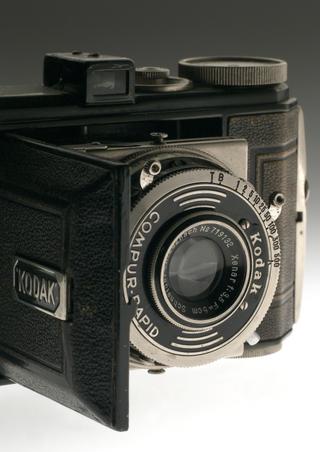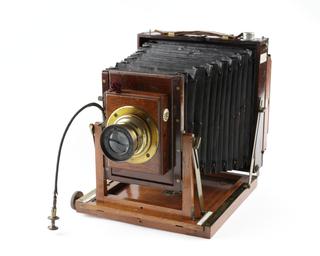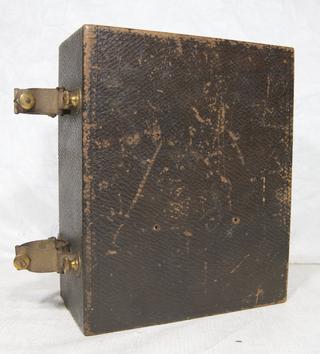
Billcliff Half-Plate Field Camera
- Made:
- 1880-1890 in United Kingdom






Half-plate field camera with canvas case, made by Joshua Billcliff & Sons Ltd.
Joshua Billcliff was one of Manchester’s earliest camera manufacturers. A carpenter and joiner by trade, he began making cameras around 1860, setting up a steam powered factory a few years later as the business expanded. Billcliff was joined in the trade by his sons, and they made a variety of photographic equipment, including cameras, stands and plate boxes. They also manufactured cameras for other firms, such as those of John Thornton and John Benjamin Dancer.
This bellows plate camera was made by Billcliff around 1885. A plaque on the back reads, "Billcliff maker Manchester, patent no 13956." This patent was issued to Joshua Billcliff in 1885 for his invention of a new rotating camera back. This is a field camera intended to be used a tripod, and with the lens mounted on a bellows, which is extended when the camera is in use and folded up for transport and storage. Exposures are taken onto a glass plate coated with light sensitive chemicals, which is developed to make the final photograph. This example comes complete with a canvas bag and three double dark slides, which hold the glass photographic plates to protect them from light and slide onto the back of the camera when used to take a photograph.
Details
- Category:
- Photographic Technology
- Object Number:
- Y1989.341.1
- Materials:
- wood (unidentified), brass (copper, zinc alloy), glass, metal (unknown), leather, cotton (fibre) and cardboard
- Measurements:
-
case: 300 mm x 260 mm x 180 mm,
- type:
- camera
- credit:
- Purchased From Christie's




